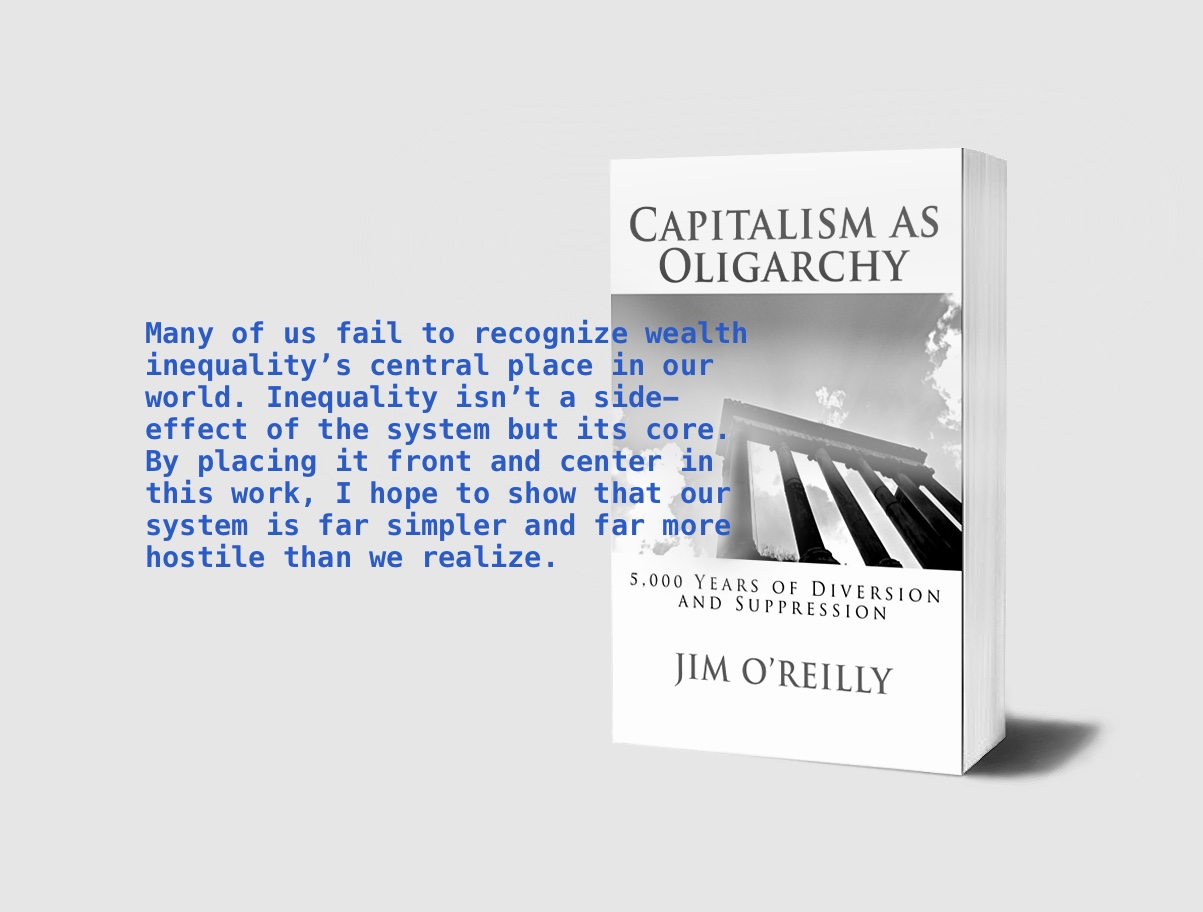Inequality editorial in the NY Times

The New York Times today decries the fact the bottom 90% own just 27% of wealth in the United States. This is no doubt a farcical situation having deep revolutionary implications, but the unanswered question is what a legitimate share of wealth for the bottom 90% should be.
The Times implies the share held three decades ago is reasonable, representing as it does the highest level achieved since (at least) 1913. But it still only amounted to 40% of wealth, a total that provided the top 10% with fully 50% more wealth than the entire bottom 90%. Should we really believe this is somehow legitimate? The (wealthy) editors of the paper of record, in what for them is a fairly radical editorial, suggest to us that the difference between a fair and unfair distribution is a meagre 13 percentage points—27% is unfair, 40% is ok.
A significant problem with these statistics is that they give us only a snap shot of the distribution within a class society. They tell us the obvious—a small minority lives extraordinarily well and the vast majority struggles. What they don’t tell us is how much better we could live given our massive productive potential. I therefore don’t think it’s very helpful to phrase the solution to inequality in terms of ‘redistribution’; far better to think of how our labor and resources could be put to better use. For completely wrong reasons the Republicans are partially right—we should focus not so much on redistributing the pie as expanding it.
So putting aside redistribution for a moment, what would be fair for the bottom 90%? Off the top of my head, I’d say quality health care, nutritious food, decent housing, modern transportation, clean environment, safe streets, income security, decent retirement, education, leisure opportunities, general freedom, and so on. In other words an equitable and decent society.
Is this achievable? Of course it is. Where would the needed labor and resources come from? We could start by freeing up the immense pool currently devoted to the military-industrial complex by negotiating a verifiable global disarmament. We could try to automate as much production as possible. We could assure full employment. We could reform the financial system and virtually eliminate the casino of speculation. We could substantially re-direct the enormous resources devoted to the whims of the top few percent via much higher income and wealth taxes. And finally, we could recognize that the power to create money rests completely with the people. We can never run out of money.
The fundamental issue, then, isn’t the redistribution of financial assets; it’s whose interests should rule society. What do we see in the world around us? Perpetual war, insecurity, poverty, austerity, crime, environmental degradation, corruption, desperate competition; all sitting alongside the enormous privilege of a tiny few. That the bottom 90% own just 27% of wealth is a sign of a decayed socioeconomic system but we shouldn’t accept the level existing three decades ago as an acceptable solution. I think we need to set our sights far higher.


As a financial writer I have a lot of contact with people who believe that the status quo is perfectly acceptable. They have reasons. Some believe that if the world were going to be different from what it is then it would be, so stop dreaming and make a living. Some believe in the Pareto ratio, which they interpret to mean that 20% of all resources–talent, money–will accrue to 80% of the population–mainly because 20% of people are more capable and naturally rise like cream. Other people don’t like empathizing with the disadvantaged because it means “thinking like a victim” instead of competing harder. Some are indoctrinated to believe that the only alternative is Stalinism. What’s scary to me is that the few individuals who truly threaten to change the situation–like Dag Hammarskjold or Martin Luther King or even John Lennon–often end up mysteriously dead. That’s the source of a low-level background terrorism that I think many of us feel.
Real interesting thoughts Kerry on both ideology and the dark underbelly of power. I’m wondering why you say it’s scary. Is it that you, as an independent thinker and maybe activist, feel threatened? That the system may be far more powerful than we’d like to think? That it’s ultimately rooted in violence? That it’s dark, conspiratorial and Kafkaesque? That there may not really be a way out? You put it well — “a low-level background terrorism”.
I grew up in the 60s when independent-minded leaders were disappearing constantly. As a reporter in the 1970s, I was seen talking to a deputy sheriff, a witness in a high-profile drug trial; he died in the middle of the night and was embalmed by dawn. I loved Pynchon’s “V”. I read “Confessions of Economic Hit Man”. In 2003 we all watched civilian Iraqis who had nothing to do with 9-11 die. Sometimes they just take away your livelihood and not your life. I don’t brood about it but I’m always aware of it in the same way that I’m aware of my own death.
I think the global system is best thought of as a mafia operation. Democracy and ‘capitalism’ are its outer ideologies but at heart it lacks all legitimacy. It needs to be overthrown but its tentacles run so very deep.